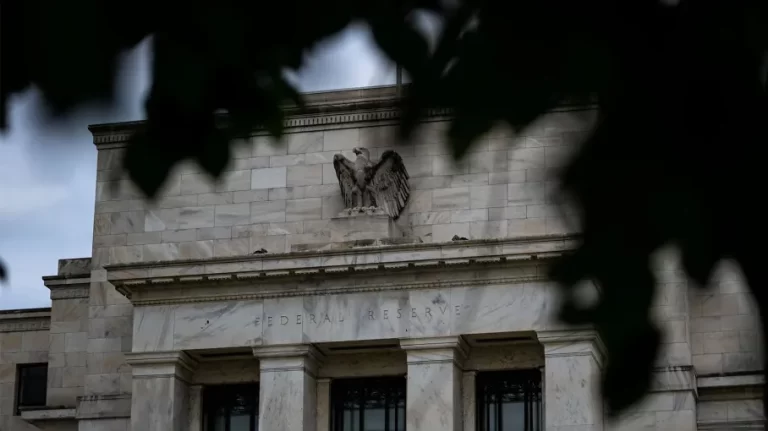Dangerous Business: How Credit Suisse and Other European Banks Came to Crisis
What is happening around Credit Suisse allows us to diagnose the European banking system – the chronic dependence of banks on excessive money supply and zero interest rates, which eventually forced banks to seek profitability in risky market operations, according to chairman of the board of directors of Arbat Capital Alexei Golubovich and managing director of Arbat Capital Alexander Orlov
When word got out about the problems of one of the largest banks in Switzerland and the rest of Europe, there was slight panic among the many Russians who had deposits there. Especially among those who remembered the collapse of Bear Stearns and Lehman Brothers since 2008, and the fears that Europe’s largest banks might become insolvent were very real at the time. Credit Suisse (CS), whose shares had plummeted even before the announcement of the new issuance, seemed like a prime candidate.
Until recently the bank ranked 43rd in the world, ninth in Europe and first in Switzerland in terms of assets (in 2022 – about $1.4 trillion). Its market capitalization fell to 22 percent of its book value (UBS, by comparison, has more than 90 percent, while Societe Generale, which is experiencing difficulties, has 30 percent). Now, when discussing the possible collapse of one or more Western banks, one hears a joke: By kicking out Russian money, European bankers, it turns out, cared about their clients!
A systemic problem
The recent announcement of the Credit Suisse “bailout” plan made the whole banking system of the developed nations talk about systemic problems. The CS additional issue for the giant’s small amount of $4 billion, which it is not yet clear who will buy out (the Saudis agreed to invest $1.5 billion), is a signal that the system lacks funds. There is a growing probability that what happened to Lehman Brothers 14 years ago in the U.S. will happen again in Europe. Banks have long been cutting their risks because of increased pressure from regulators fearing a repeat of the mortgage crisis (as in the U.S. in 2008) and the debt crisis (as in the EU in 2010-2012). Central banks in developed countries accustomed investors to coming to the aid of any bank deemed too big to fail. But the deterioration of the banking sector that began during the pandemic threatened a full-blown crisis. The European Central Bank (ECB) has long been reluctant to raise rates to fight inflation, and now it cannot “for free” refinance the trillions in debt of banks and their borrowers, including governments, because of the same inflation. As a result, if a bank is short of capital, neither the regulator nor long-term investors can raise money as before – by diluting shareholder stakes and refinancing their really bad portfolios. Especially when the market prices of 10-30 year government bonds of even the best economies in Europe have fallen by 25-40% this year – and continue to fall. This will at best lead to the bankruptcy of weak players and consolidation of the industry, and at worst to the collapse of large banks, massive defaults and non-returns of deposits.
Since the debt crisis and ECB head Mario Draghi’s promises to “do everything possible” to save the euro and the European financial system, Europe has seen a covid-crisis, quantitative easing programs, a prolonged period of negative rates, and a record collapse of the euro. Finally, an energy crisis that hit all customers, combined with extreme management inefficiencies, brought universal banks like CS to their current state. And the geopolitical risks of 2022, especially related to Russia and China, have left banks not only without an influx of foreign money that is no longer willing or able to “hide” in Europe, but also without central bank support. The long period of negative rates led to the fact that banks had either to increase the risk of assets taken on their balance sheets, or to significantly increase their leverage, or to increase the volume of off-balance sheet operations, de facto bypassing the restrictions of the regulator on the level of risk taken.
The level of risk and quality of assets at EU and Swiss banks have recently been moving in directly opposite directions. Risk was rising and quality was falling, although the changes were less noticeable than for U.S. banks before the 2008 crisis. The amount of troubled assets on the balance sheets of European banks reached €270 billion, which was not a cause for concern, as it was only 2.3% of all assets. But with the deepening of the recession in the EU and a sharp decline in asset quality, this figure will grow many times over. Of course, the level of coverage of troubled assets by reserves also increased in the previous 10 years – from 50% during the debt crisis in the EU to 60-65% now (though sometimes creatively – by recognizing the asset as non-problematic). The Core Tier 1 Ratio rose from 9 to 13-14 from the bottom of the crisis. But then securities, including those included in banks’ capital, were also growing, and now the stock bubble is deflating.
Banks’ profitability has shrunk considerably because of negative rates and the deflation of the stock market bubble. From the stock market, the investment divisions of Credit Suisse, Deutsche Bank and other large banks received significant commissions. Now this will have to be forgotten: on average, according to Eurostoxx 600 Banking Index, return on equity in Q2 2022 fell to 7.25% (against 12.5% average over the previous 10 years and 5% at the bottom of the debt crisis in 2010). At CS, the figure went into negative territory (-7.9%) due to huge losses on the bankruptcy of the hedge fund Archegos. Return on assets for banks has fallen even more: from 1% on average over 10 years to 0.52% now (it was 0.38% in 2010).
The capital coverage and funding structure have improved after the last crisis through the issuance of additional shares, warrants and convertible bonds. Moreover, the share of deposits in the funding structure grew from 45% to 64% even with zero or negative rates. Depositors were still more profitable than buying government bonds at -1% at a price tens of percent above par (the price of 30-year government bonds in Germany, for example, exceeded 200% of par value in 2020-2021). But now the yield on German government bonds is already 2%, and Italy’s is up to 4.5%.
Who is at risk
The banks that are most at risk are those whose clients are most dependent on the energy prices, where the share of foreign financing is too high, and where the investment business is clearly degraded. That is, banks whose asset structure differs greatly from the classical one are at risk. The share of European banks is shrinking year by year, from nearly two-thirds before the debt crisis of 2010-2012 to half in 2022. The remaining part is filled by all sorts of investment products and Eurozone government bonds, which initially could bring more profitability, but has now become an important risk factor. Banks (even with a large share of retail, as in CS) were not very eager to increase lending in the period of economic growth. They were even more reluctant to get involved with complex corporate loans, suggesting that everyone buy rising securities (mostly American and partly Chinese) and increasing their own risk in the midst of an inflating bubble.
And that’s without considering the risks of huge off-balance sheet items: CS has CHF15 trillion worth of them, Deutsche Bank has €40 trillion worth. In reality, no one can estimate the potential amount of losses on off-balance sheet assets while the recession continues. Therefore, depositors and investors are now better off bypassing banks with these kinds of balance sheets.
Necessary cures
How can European banks be “cured”? For regulators of leading European countries – Germany, France, Italy, Spain, as well as the ECB and the Swiss National Bank, it is important to maintain the integrity of the European banking system. Under current conditions, it is no longer about providing liquidity (as Mario Draghi thought) and not about easing regulatory pressure. The main thing now is to maintain banks’ creditworthiness, which requires structural restructuring of their business models. In particular, this requires the traditional regulators to recognize the new realities of the fintech era and mass implementation of online banking, which is much better developed in the less conservative United States, several Asian countries and Russia. Perhaps even the recognition of cryptocurrencies as legal money for payments in certain systems – social networks, for example.
However, the main thing is to diagnose the system correctly, and for the “patient” to accept this diagnosis. The main thing in this diagnosis is the chronic dependence of European banks on excess money supply and zero interest rates, which, on the one hand (as it seemed) have forever removed the problem of liquidity in the financial system and creditworthiness of sovereign borrowers, but on the other hand have forced banks to seek yield in the lower range of the credit risk curve, increase financial leverage and get into complex derivative structures in off-balance sheet accounts. In other words, the zero-rate era transformed banks from savings and loan institutions and private banks (Private Banks) with elements of investment banking (underwriting, IPOs, M&A, advisory, trading) into “warehouses” of stock market instruments, junk bonds, Leveraged Loans. These banks turned their assets sprawled out on quantitative easing (QE) programs into portfolios of the riskiest market segments. The U.S. was moving away from this situation after the Great Depression, and then after the collapse of Lehman, and in Europe with its weak ECB had no such experience.
Until 2022, local problems of individual banks (Unicredit, Deuche Bank, Komerzbank) were solved by an additional issue, government aid, and a small reduction in the pool of troubled assets. And now the crisis at Credit Suisse may demand its partition, “cutting off” from the once good private bank that existed since 1856 all components too infected with risks. Deutsche Bank and other overgrown players who are sellers of bad assets may have to undergo a similar operation. Investment banking, structured products and investments in alternative asset classes (hedge funds, commercial real estate, SPACs, etc.) should be the first to be separated.
Judging by the information on CS transformation plans, it has already been decided to separate the investment banking business from the bank along with an additional issue (probably, not the last one). Interesting is the fate of the client assets management business (asset & wealth management), which earned money while the market bubble was growing and now is in the zone of increased attention from the regulators. Perhaps most of the business will go to independent management companies in the segment of hedge funds and fintech businesses that offer cheaper and more effective services. Employees will have to leave (in the CS staff will be reduced from 52 000 to 43 000), and costs – to radically cut. At the same time, it is obvious that cost reduction of many departments by 30-50% will not provide an increase in competitiveness of the reformed banks.
Another important question: who will buy from the banks being reorganized and reducing their business all these “non-core” subdivisions, as well as huge, trillions of euro portfolios of complex-structured assets? Of course, with the cheap euro, dollar investors could be contenders for such assets. U.S. banks would buy units of Europeans in the United States and Latin America. Sovereign funds and state banks from the Persian Gulf countries, which are friendly to Europe, would buy European businesses and shares in the banks themselves in the course of additional issues. Earlier Chinese investors could buy Asian portfolios, but they are not up to it now. The traditional class of buyers of businesses with big discounts – private equity funds (Private Equity, Distressed Funds) – are experiencing hard times because of rising rates and difficulties with obtaining leverage.
Finally, buyers will take their time because they understand that if “European Lehman” does not happen in 2022-2023, no one is immune to a repeat of the semi-default of Cyprus, Greece and certain European banking systems. And in case of a repeat of the sovereign debt crisis in the EU, all bank assets and troubled banks themselves will fall even further in price.
What to do for depositors
Foreigners who can still hold funds in banks in Switzerland and the European Union, need to diversify investments on the basis of capital adequacy of financial institutions. Also need to know what assets clients have on off-balance sheet accounts of banks. And finally, so that assets are not lost in the event of collapse of the bank, it is better if at the time of crisis, the client’s money will not be kept in cash on current accounts, but in the form of public liabilities (Swiss or U.S. level) with a maturity of about a year.







